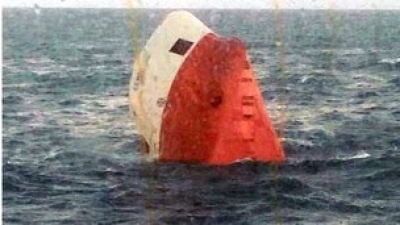Cemfjord fatal casualty 'could have been avoided' - MAIB

The fatal capsizing of the cement carrier Cemfjord off the north of Scotland in January 2015 was almost certainly due poor passage planning and a resulting decision not to seek shelter according the UK’s Marine Accident Investigation Branch (MAIB).
The Cemfjord capsized in the Pentland Firth on 3 January 2015 in what the MAIB described as an “extraordinarily violent sea”. The vessel sank so quickly there was not time to send a distress call and the alarm was not raised for 25 hours until the upturned hull was spotted by a passing ferry. All eight crew died in the accident and their bodies were not recovered despite an extensive search.
“The MAIB investigation found that Cemfjord capsized in extraordinarily violent sea conditions; a fatal hazard that was predictable and could have been avoided,” said Steve Clinch, chief inspector of marine accidents, MAIB.
“The decision to enter the Pentland Firth, rather than seek shelter, was almost certainly a result of poor passage planning, an underestimation of the severity of the conditions and perceived or actual commercial pressure to press ahead with the voyage.”
The unwillingness to alter course was also underpinned by the shift in a cement cargo in heavy seas three months earlier.
“The appalling conditions and rapid nature of the capsize denied the crew an opportunity to issue a distress message or to escape from their ship,” he said.
Following the accident the MAIB said the vessel’s manager Brise Bereederungs has implemented several changes and initiatives aimed at improving the safe operation of its cement carrying vessels and the safety culture of its crews.
“This tragic accident is a stark reminder of the hazards faced by mariners at sea and the factors that can influence decision making in such treacherous circumstances,” Clinch concluded.
HEADLINES
- Do shipping markets want Biden or Trump for the win?
- All 18 crew safe after fire on Japanese-owned tanker off Singapore
- Singapore launching $44m co-investment initiative for maritime tech start-ups
- Cosco debuts Global Shipping Industry Chain Cooperation Initiative
- US warns of more shipping sanctions
- China continues seaport consolidation as Dalian offer goes unconditional